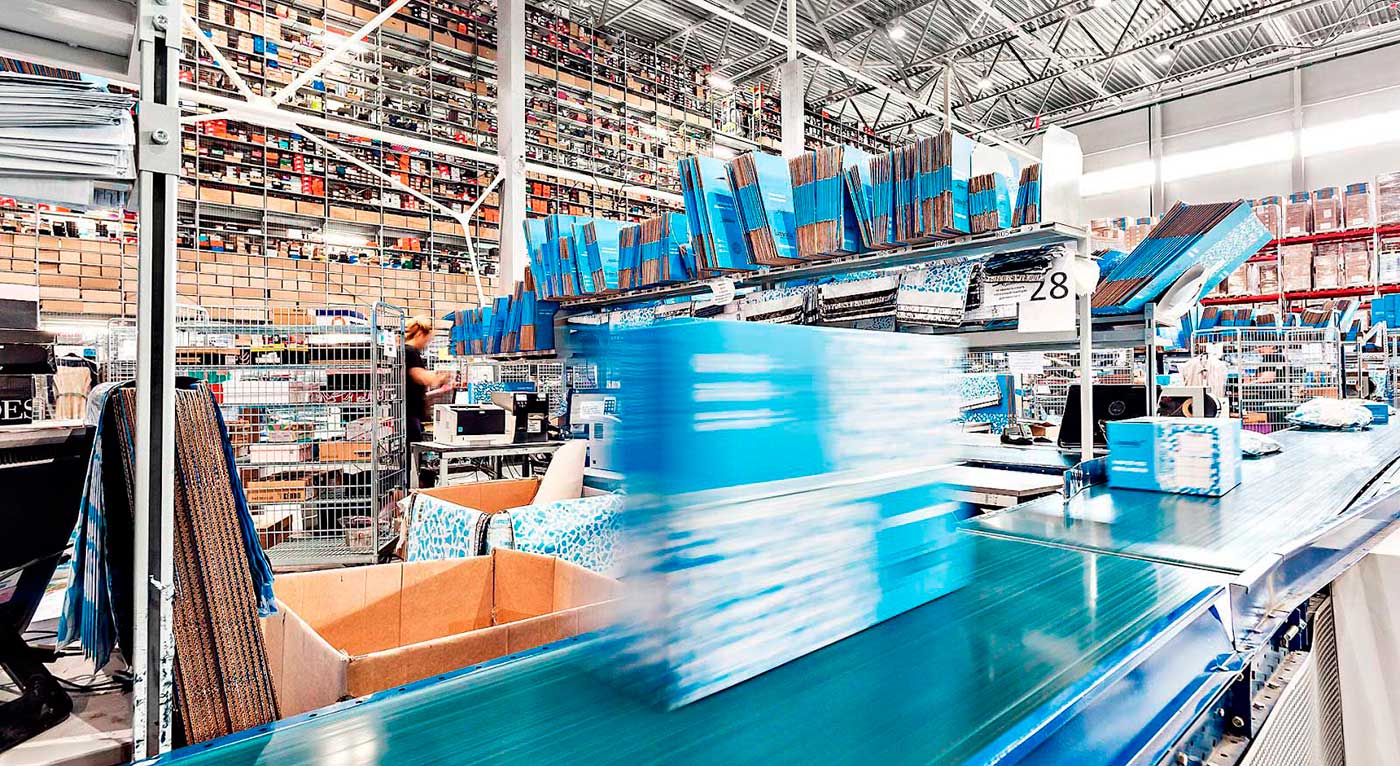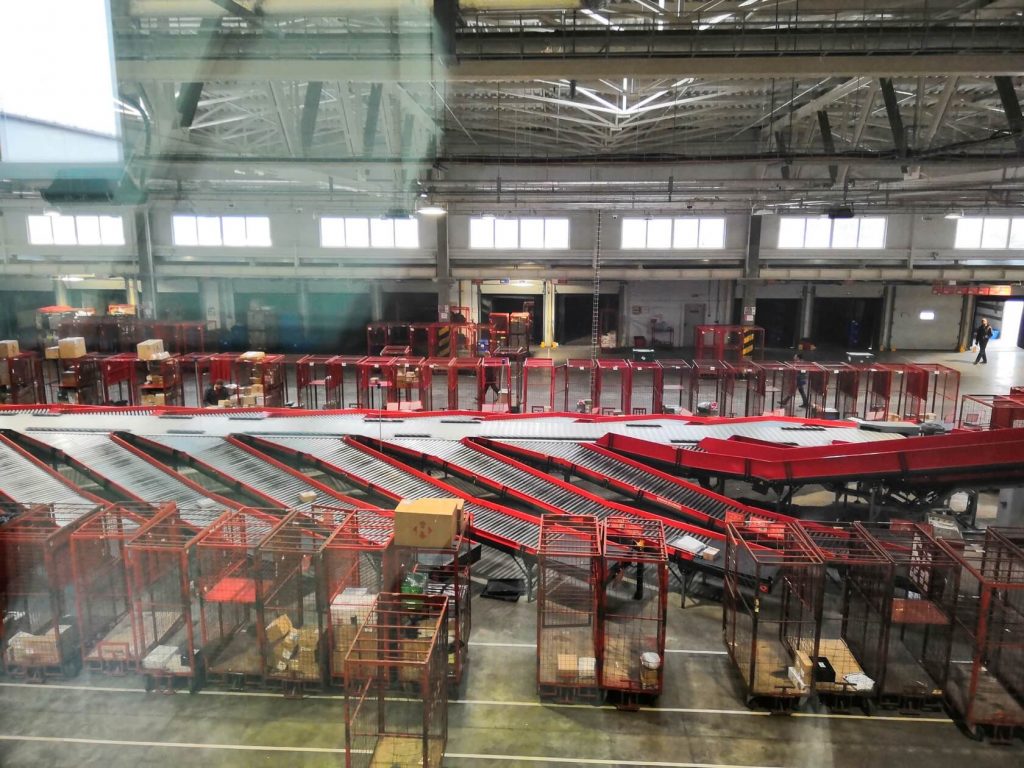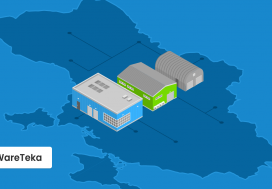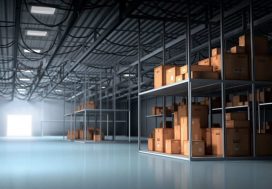
- The need for safety stocks
- What technical innovations control warehouse stocks
- How warehouse logistics outsourcing changes the geographical presence
- How platform development influences the logistics real estate market
- The larger number of order processing
- Improving warehouse efficiency through innovation
- Conclusion: How warehouse logistics changes in 2021
The COVID-19 pandemic brought significant changes in logistics: warehouses were overfilled and demand for them increased greatly. However, in new realities, the warehouse logistics situation can change at any moment, so the company needs to be able to adapt.
In this article, you learn about the main trends in warehouse logistics in 2021. WareTeka has gathered up-to-date information about how the industry will functionalize, what the prospects are expected, and how modern technologies help businesses resist the crisis.
The need for safety stocks
Before the pandemic, Just-In-Time was the most popular stock management approach. It suggests that a product should only be supplied when needed to manufacture the goods or its sale. This approach was used even by large companies in the past, as it reduces warehouse maintenance costs.
However, as supply chains became unstable during the pandemic, companies had to accumulate safety stocks. In addition, many businesses’ activity stops what led to shortages of materials. Deliveries of end products declined and prices for them increased.
For example, companies around the world are facing shortages of computer chips. According to The Guardian, Apple was forced to postpone the release of its iPhone 12.
The pandemic has also affected negatively the well-functioning global supply chain. The effects are still observed. It is enough to recall the incident with Ever Given’s container ship, which was stuck in the Suez Canal. It blocked the way for other ships and could cause a collapse in the world economy. According to Business Insider, this situation could lead to a shortage of goods for everyday living and interior.
To avoid such mistakes, companies had to decline the Just-In-Time method and use the Just-In-Case approach. By accumulating stock, companies will avoid shortages of goods. Demand for warehouses will also increase.
What technical innovations control warehouse stocks
Big Data Analytics will probably be used for a long time in warehouse logistics. With its help, a large data pool is collected and then used in process modeling and production needs prediction.
Many European and Ukrainian providers implement Big Data in their warehouses. Zammler is developing the Logistics Management System. Such a system will combine data with TMS, WMS, CRM, GPS, security systems, collecting big data for different purposes.
How warehouse logistics outsourcing changes the geographical presence
Companies try to find new markets, diversify the range of products, increase the volume of production. For this purpose, it is necessary to extend the geographical presence — «scattering» warehouses on cities and countries. It also helps to avoid supply disruptions and ensure rapid delivery to the final consumer. But it is expensive to build a warehouse infrastructure and also time-consuming.

The solution may be to outsource warehouse logistics to 3PL providers. They are professionally engaged in contract logistics and have an extensive network of warehouses.
The statistics confirm the outsourcing’s effectiveness. According to the Shopify study, the growth of e-commerce has increased demand for order processing centers by 51%. Online retailers use contract logistics services to bring product storage closer to the customer and speed up delivery. Due to a research report, the contract logistics market will double and run to $408 billion by 2025.
How platform development influences the logistics real estate market
The increase in demand for warehouse facilities and services led to the development of the Warehouse-As-a-Service business model. It is based on the idea of collaborative consumption. Users of warehouse services and providers are connected on one platform. For example, the logistics provider has idle warehouse space that is ready for use. At the same time, retailers are looking for additional storage space. A platform of this type unites both sides: the provider makes a profit from the premises rental and the retailer gets the necessary space for storage.
The European market is well developed in this way. The best-known examples of this business model are DHL Spaces, Waredock, Deliverr.
The larger number of order processing
The development of online retail has affected the number of orders, which hit all records in 2020. Analysts predicted that Internet shopping will be at the top for several seasons. The development of online retail has caused a load on warehouses.
For example, «Nova Poshta» uses the capacity of three logistic terminals for processing orders. These terminals are located in Kyiv, Khmelnytsky, and Lviv. By the end of 2020, the terminals were handling 50,000 loads per hour. But even this capacity was not enough.
In January 2021 «Nova Poshta» put into operation Kyiv Innovative Terminal. Only it can handle 50,000 parcels per hour.

Since consumers are interested in fast delivery, a high order processing rate will be an additional competitive advantage.
Improving warehouse efficiency through innovation
One of the main trends in logistics is automated processes. Amazon, for example, has introduced the use of robots in their warehouses. They do the homogenous operation in 15 minutes. A warehouse worker does the same job in an hour.
Of course, automation is expensive and only a large company can afford it. Nevertheless, modern technologies are also actively applied in Ukrainian warehouses. A well-known OMEGA auto parts distributor and KAPELOU warehouse automation provider introduced AGV sorting.
These robots work without human participation. They do not need to be managed by remote control or command. With built-in sensors, they can assemble the goods or pack them. Thus, the robots do all the routine work in a short time. They can do only one kind of operation, either sorting or assembling. But even this greatly accelerates the warehouse work. You can read more about warehouse robots here.
Conclusion: How warehouse logistics changes in 2021
The global pandemic and shipping accidents have shown that warehouse logistics must be flexible. It is important to be able to predict future processes, build partnerships, and promote warehouse efficiency. Natural selection does not work here — under these conditions, it is not the strongest that survives, but rather the one most responsive to changing market environment.
The warehouse logistics development is impossible without innovation. Automation of warehouse processes and operations is an important component. Ukraine stays also in the course of modern logistic trends, and eventually, the number of Ukrainian automated warehouses will also increase.




